THE NECESSARY EQUIPMENT
To complete this tutorial, you will need:- 1 leather skin - 0.50 to 0.60 m² minimum surface area - approximately 1 mm thick
- 1 nylon zipper - Mesh width: 6 mm - Length: 65 cm
- 1 nylon zipper - Mesh width: 4 mm - Length: 18 cm
- 2 medium DOUBLE CALOTTE rivets in brass (T3) - Nickel plated
- 2 medium DOUBLE CALOTTE rivets in brass (T4) - Nickel plated
- Fabric for the lining - we advise you to select a coated fabric.
- 1 cutter or scissors
- 1 sewing machine
- 1 spool of polyester thread No. 30 (diameter 0.41 mm)
- Double-sided adhesive tape
PRESENTATION OF THE CREATION
TUTORIAL VIDEO
1. PRINT AND TRACE THE PATTERN
Download and print the pattern at actual size.
Using a silver pencil, trace the pattern pieces for the toiletry bag. Mark the centers of each piece with a silver pencil or by making a small 1 mm notch in the leather (see the pattern).
Also trace the pieces in the fabric lining, adding approximately 2 mm all around each piece (also mark the middles).
Be careful for piece P7, you must transfer it once in one direction and once in the other direction (only in the fabric).

|
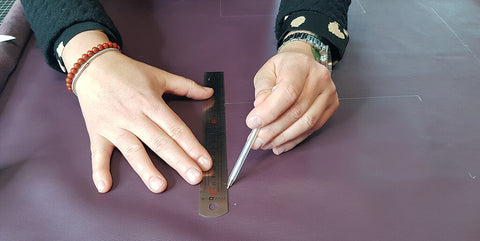 |

2. Cut out the different pieces
Cut out the different pieces of leather. Cut out the pieces of lining (not forgetting the extra 2 mm all around each piece).
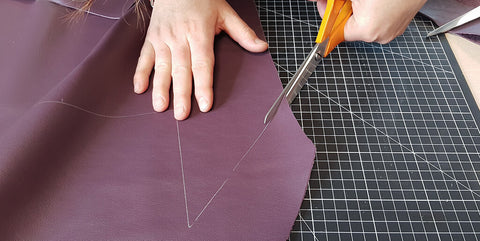 |
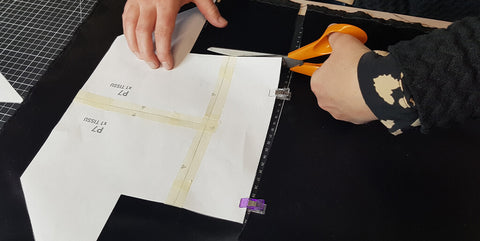 |
For the handle (part P6), glue two pieces of leather together with leather glue. Then, cut out part P6.
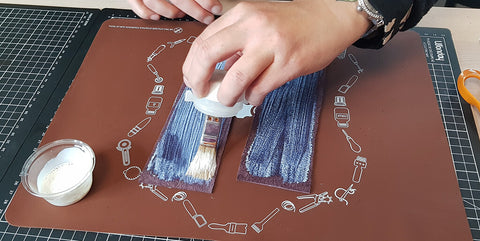 |
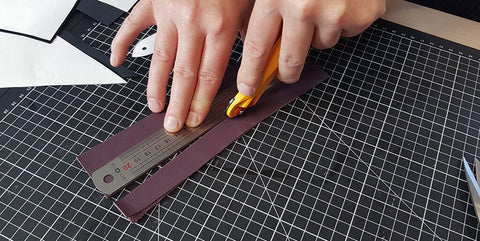 |
Drill 3 mm holes on the handle and on part P1. 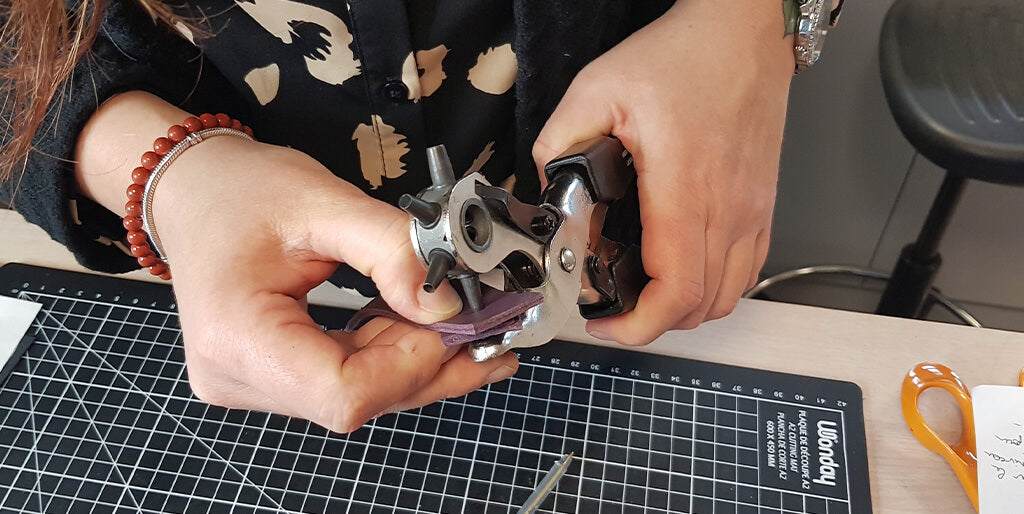
3. Make the handle
Make a decorative seam all around part P6 (handle). 
Then, work the edge of the handle with an edge finish. 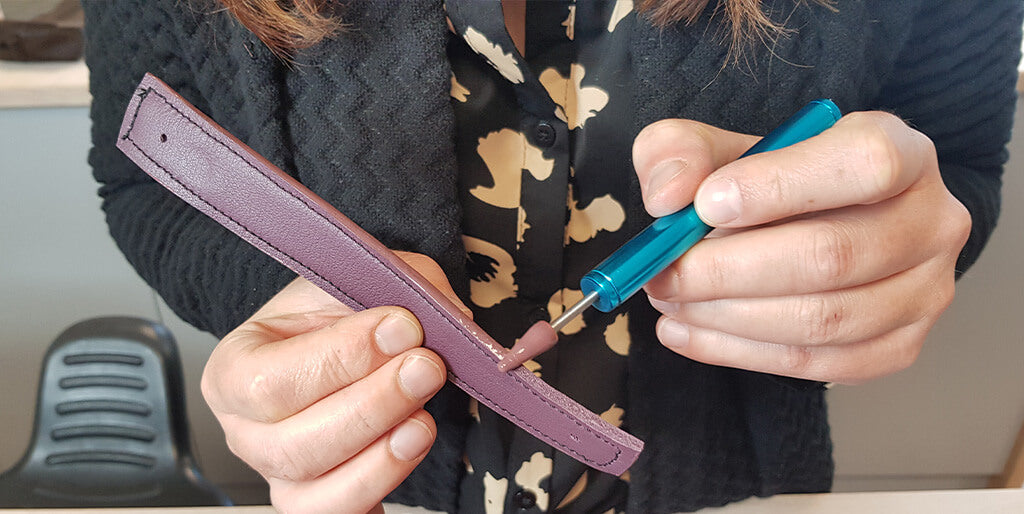
You can then attach it to the location provided on part P1. The foot of the rivets will be hidden in the lining.
4. Make the inside pocket
Assemble the back of the small zipper (length 18 cm) against the right side of one of the pieces P5. Then, assemble the right side of a second piece P5 on the right side of the zipper. More precisely: sandwich the closure between two pieces P5.
Then sew, with a closing presser foot, as close as possible to the stitch, approximately 5 mm from the edge.
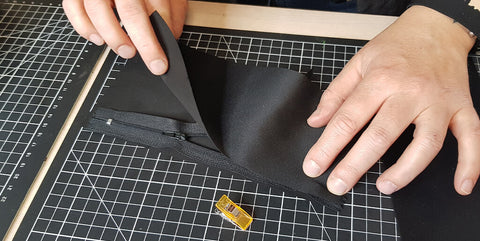 |
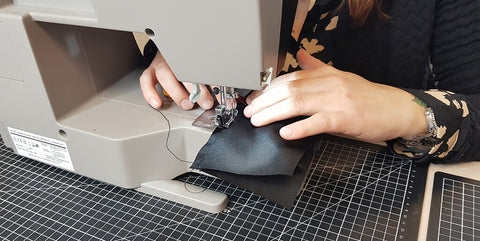 |
Open pieces P5 (change sides) then topstitch 3 mm from the edge.
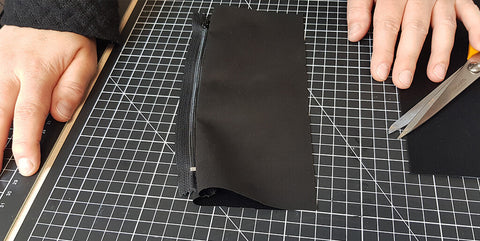 |
 |
Do the same on the other side of the zipper and with the two remaining P5 pieces.
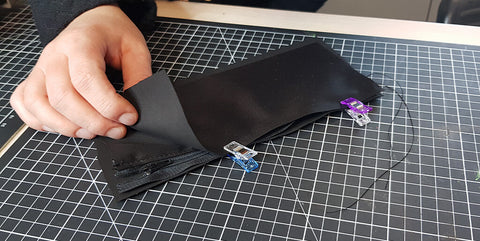 |
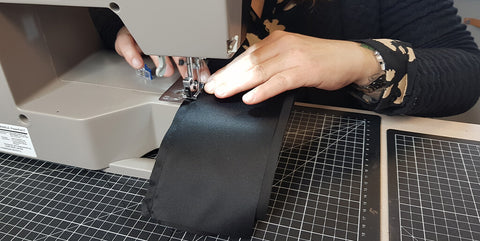 |
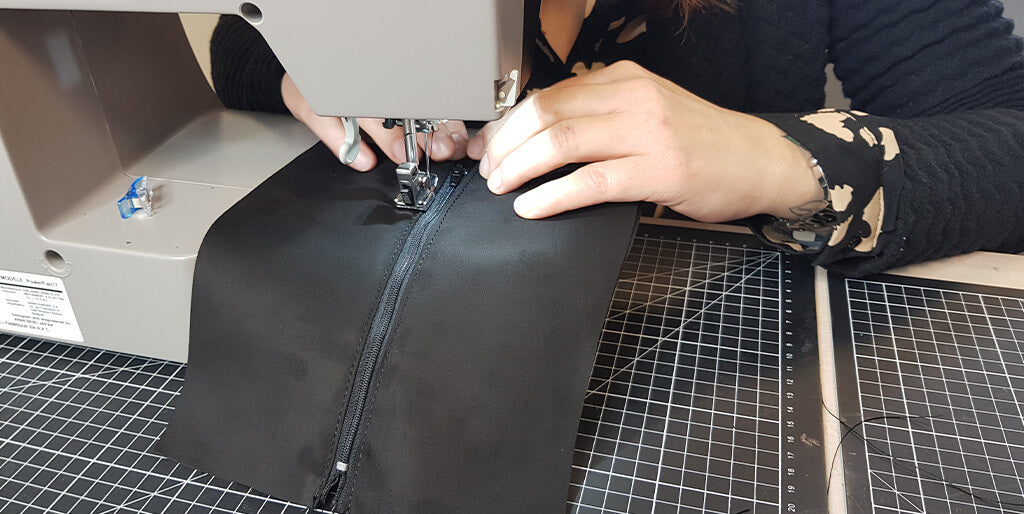
Take the two P5 pieces that are sewn above the zipper and put them on the same side. Then, put the two P5 pieces from under the zipper on the other side. Hold the pieces with sewing clips.
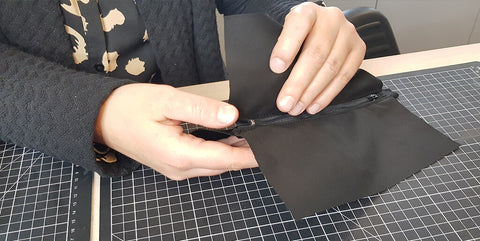 |
 |
Sew the two widths (only) 1 cm from the edge.
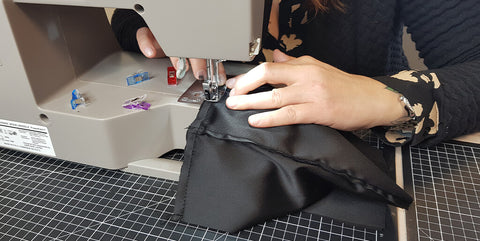 |
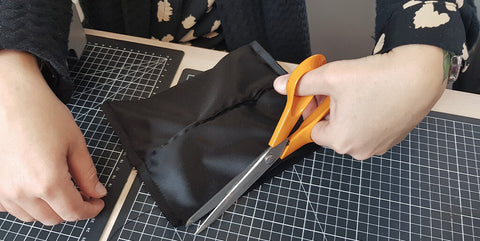 |
Trim the corners and turn the pocket over.
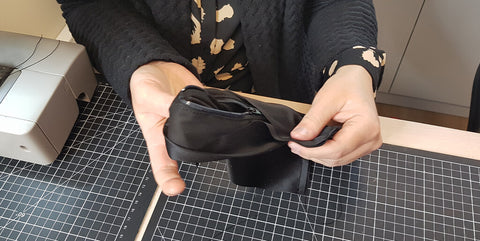 |
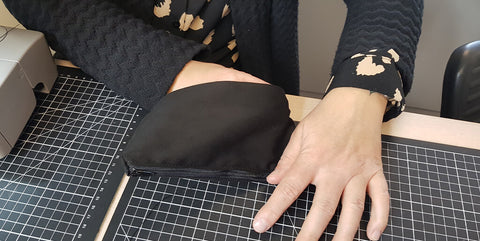 |
Sew the bottom of the pocket at 5 mm.
 |
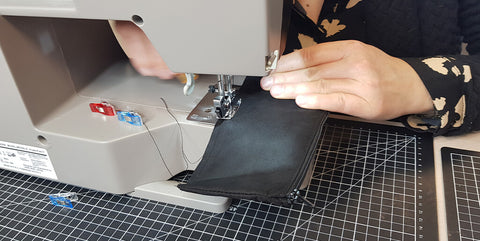 |
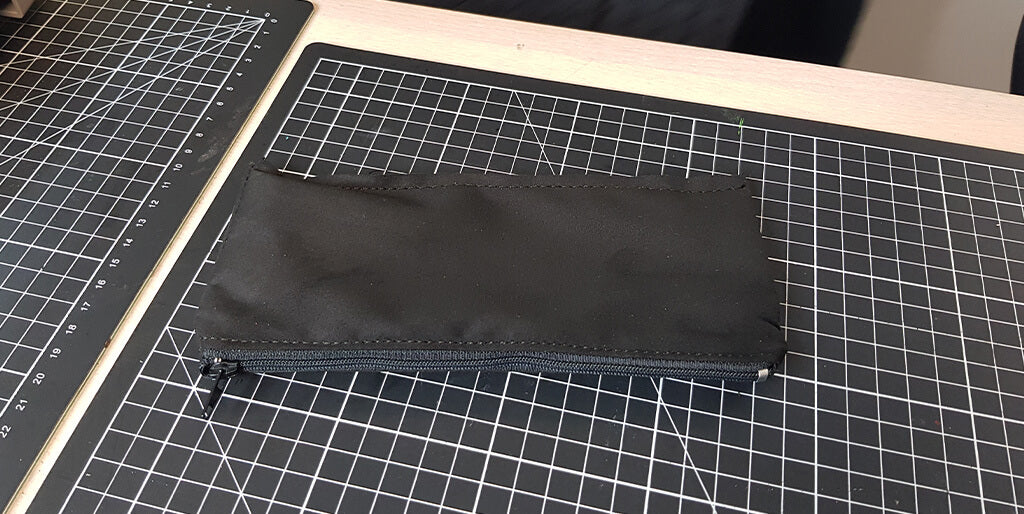
5. Sew the 65 cm zipper
Take the 65 cm zipper and mark the middle of the zipper (on each side) to be able to position it correctly. 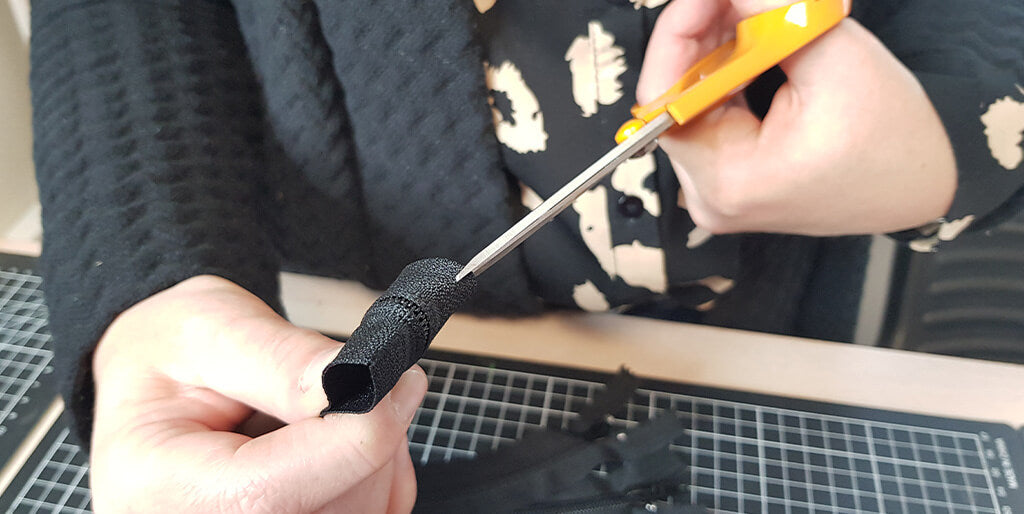
Place the right side of the zipper on the right side of piece P1 (edge to edge), matching the middles.
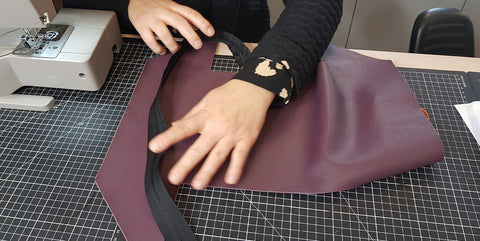 |
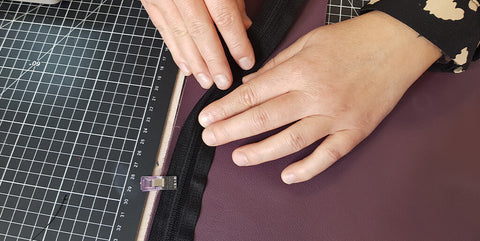 |
Sew twice, starting in the middle each time. Stitch 5 mm from the edge.
 |
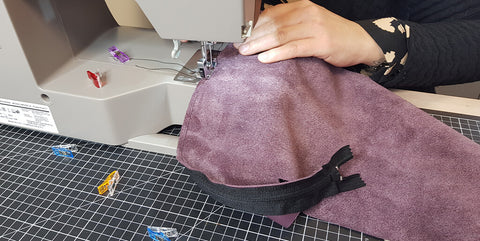 |
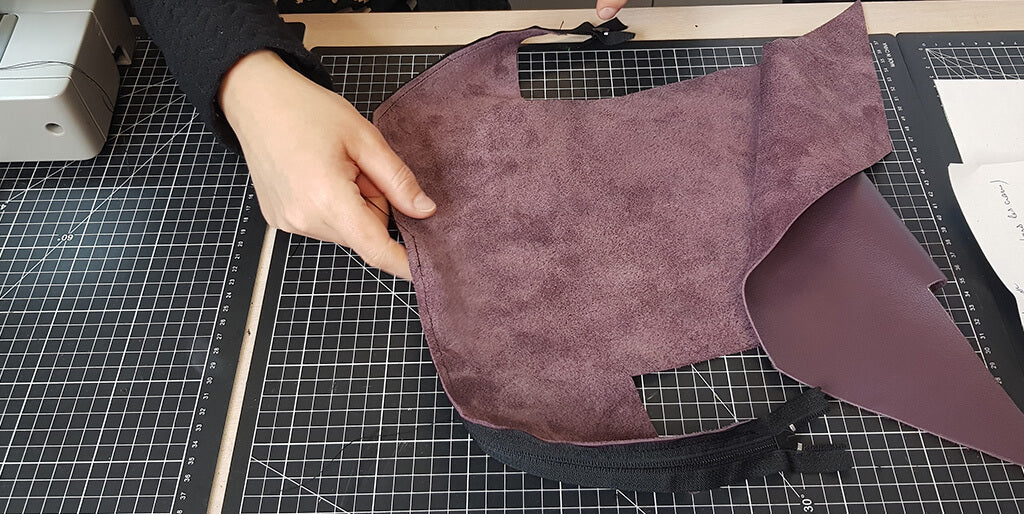
Place the right side of piece P7 of the fabric lining on the reverse side of the closure. Place the pieces middle against middle. Sew the lining in two times starting from the middle 7 mm from the edge.
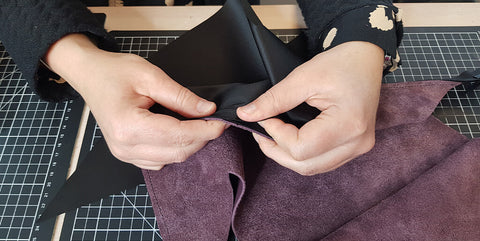 |
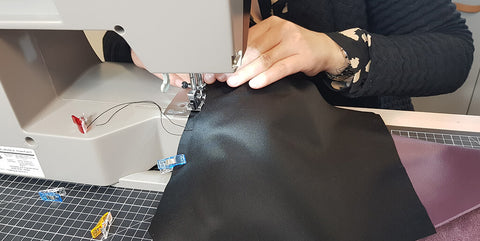 |
Clear the corners a little. 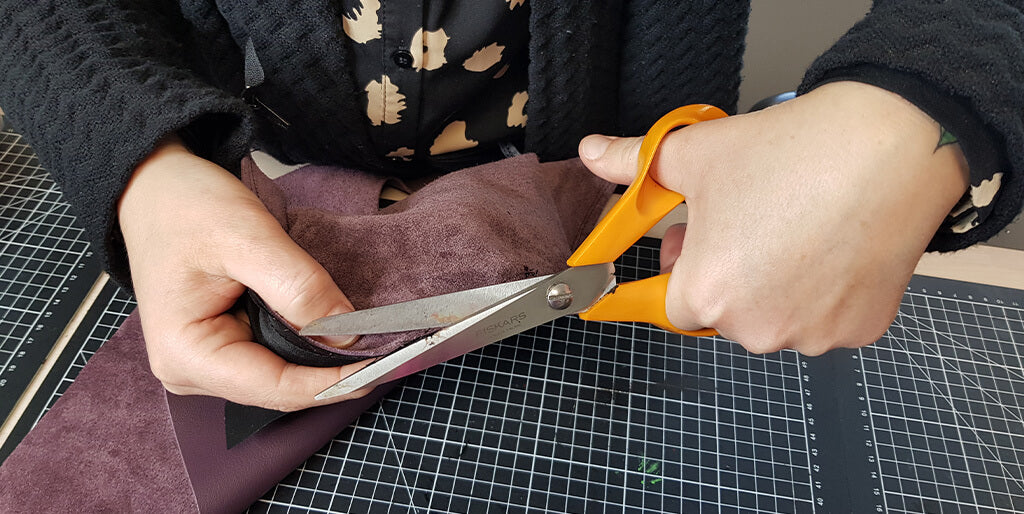
Place pieces P1 (leather) and P7 (fabric) on the same side, then topstitch 3 mm from the edge.
 |
 |
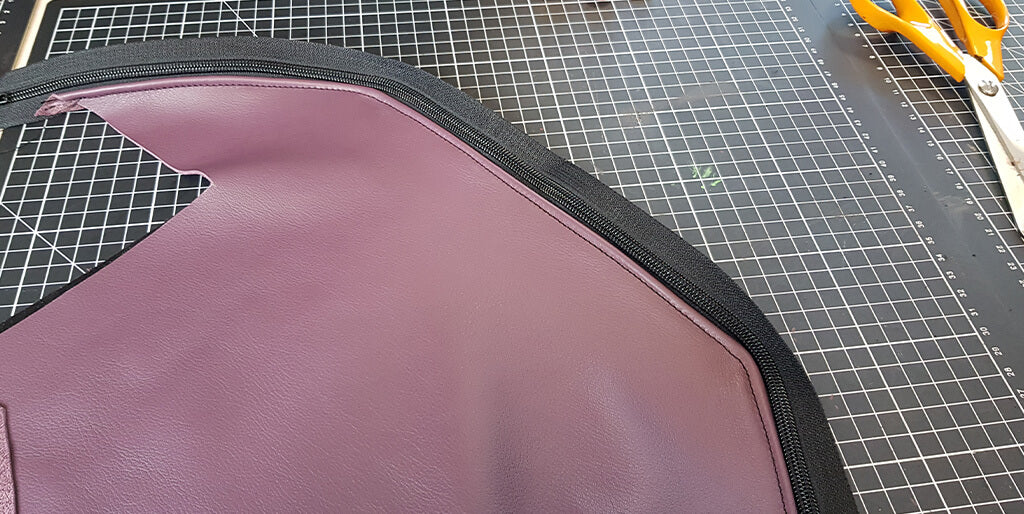
Do the same thing on the other side of the zipper with the other end of piece P1.
 |
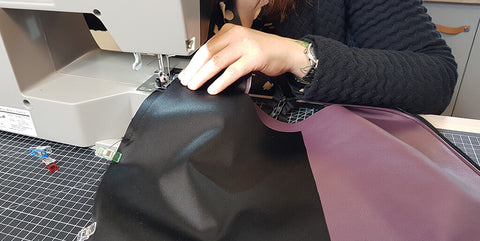 |
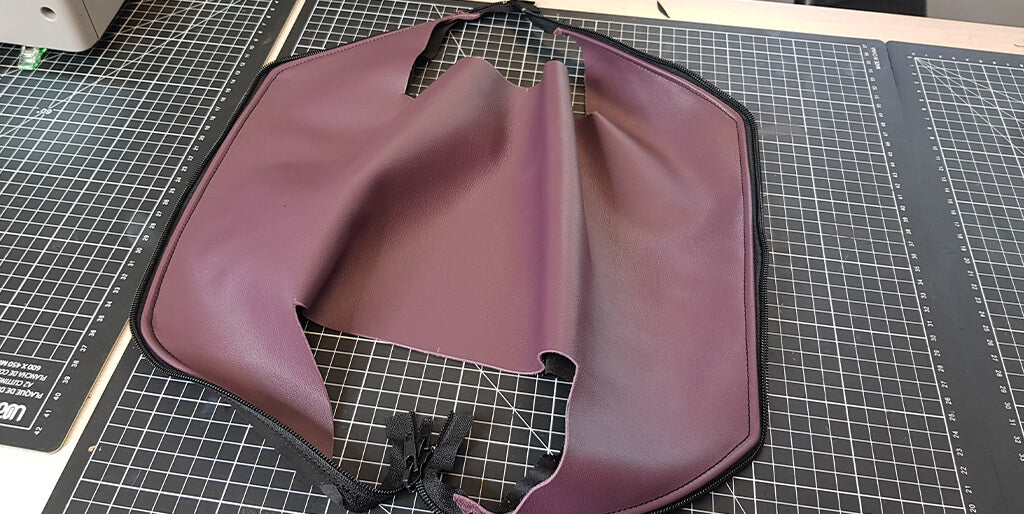
6. Attach the inside pocket
Take the interior pocket sewn in step 4. Place the pocket on one of the pieces P7 (position it in the middle, balance 1 cm on each side). Sew 5mm from the edge.
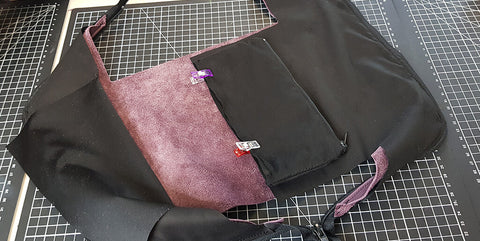 |
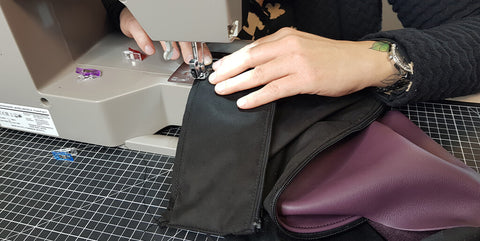 |
Turn the piece over (the front side of the leather facing you). Then, take the ends of the two pieces P7 and assemble them right sides together.
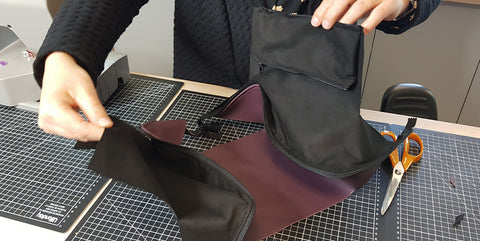 |
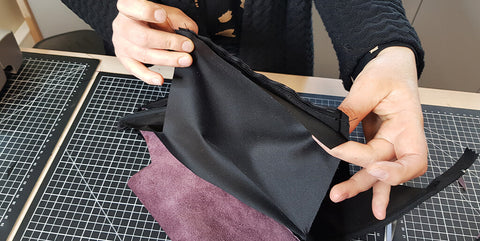 |
Sew the bottoms together 1 cm from the edge (do not sew the sides) and leave a space of at least 10 cm so that you can turn the case over at the end.
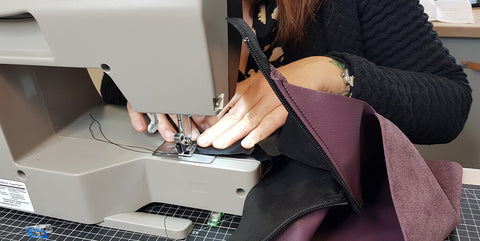 |
 |
7. Install the bellows on the sides
Take two P4 pieces and sew them together right sides together on 3 sides (sew 2 widths / 1 length).
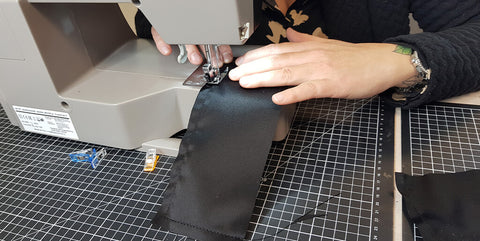 |
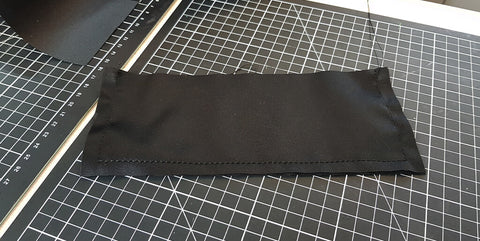 |
Trim the corners a little and turn over.
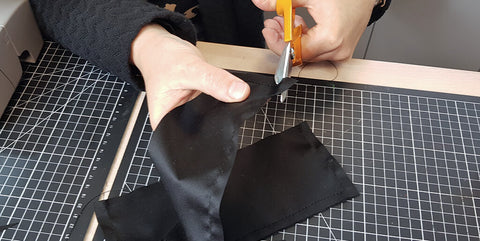 |
 |
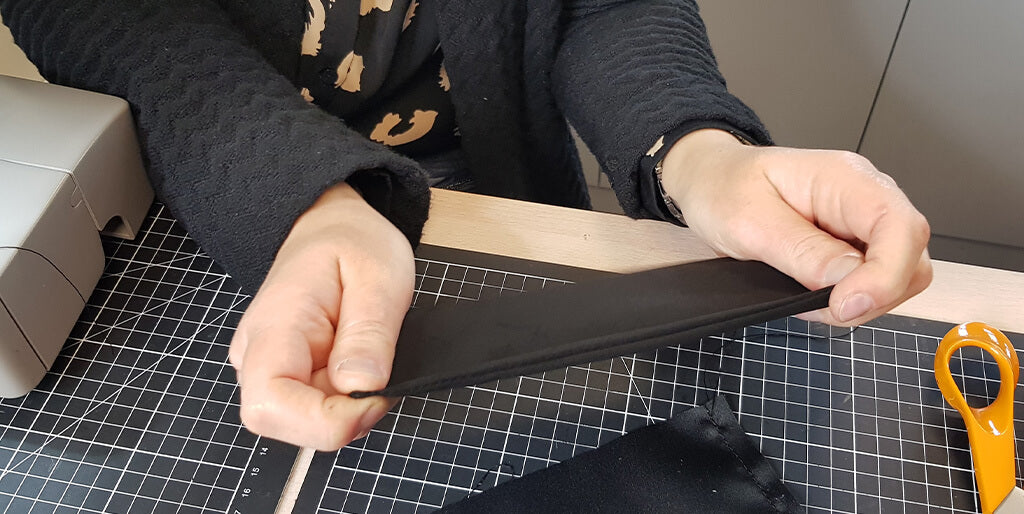
Topstitch the three sewn sides of pieces P4.
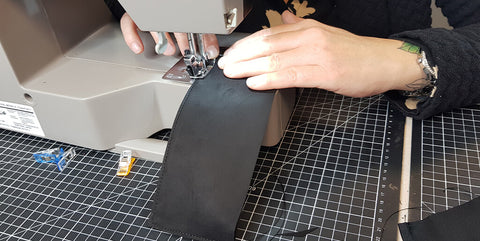 |
 |
Finally, sew the last length. 
Do the same thing for the other two pieces P4. 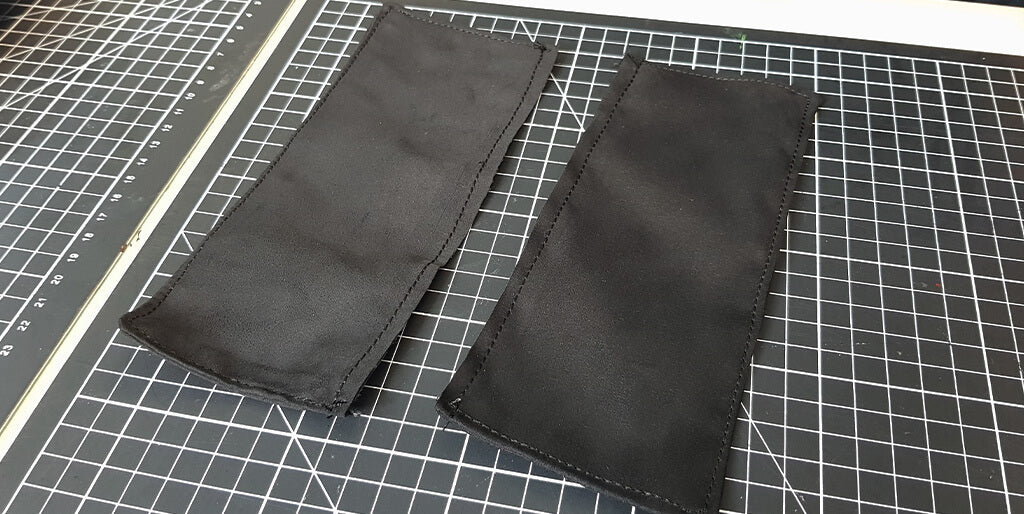
Assemble at 0.5 cm, the gussets on the lining on each side of the case. Position the last sewn side of piece P4 edge to edge. For this step, we advise you to watch the video.
 |
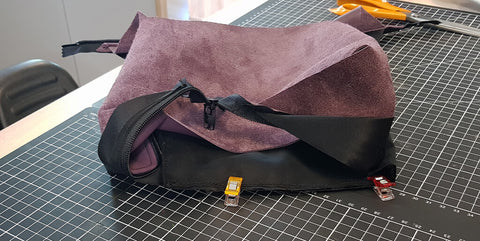 |
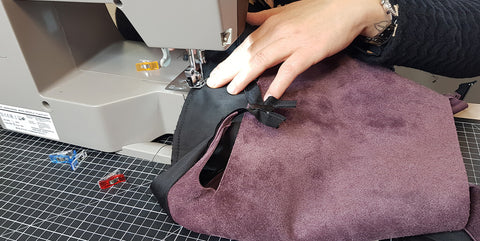 |
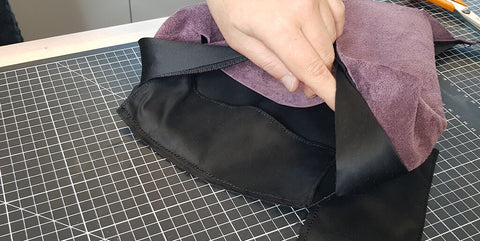 |
8. Close the sides
For this tutorial we used a double slider closure with X opening (see video): be careful for this tutorial we recommend having an O opening. You must either change the direction of the sliders (see the video below) or remove a cursor. We chose to remove a slider.
Open the zipper by pushing the slider as far as possible.
Bring the sides of the case together by crossing the two parts of the zipper. Start the crossing on the opening side of the zipper.
Be careful that the two sides of the zipper cross at the middle notch (on the leather part - pattern P1). The crossing must be done 1 cm from the edge at the level of the “Closure crossing” mark indicated on the pattern (piece P1). Hold with pliers. 
Then position the lining part edge to edge on the leather part, at the crossing, and hold with sewing clips.
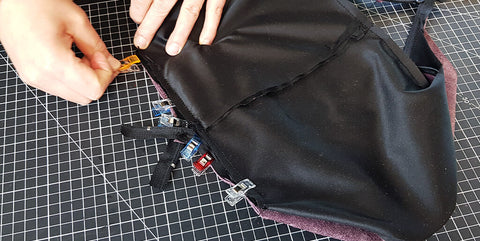 |
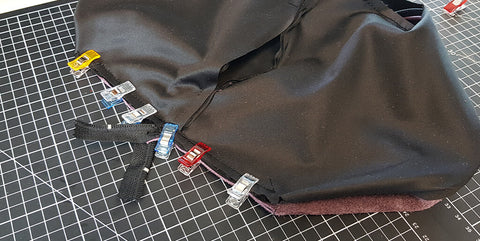 |
Sew everything together 1 cm from the edge. 
Do the same thing on the other side of the pencil case. Be careful to be able to cross the other part of the zipper (which is normally closed), you must push the slider towards the side already stitched and cut at the stop. Then open the stitches up to the slider so that the closure is completely open (you will not have this problem if it is a double slider closure with an O opening).
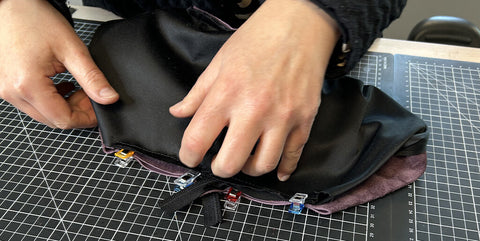 |
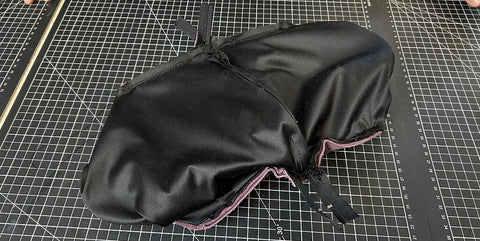 |
9. Close the lining
Cut the excess closure ends and turn the kit over through the hole left in step 6 (see video). 
Then, sew to close the hole.
 |
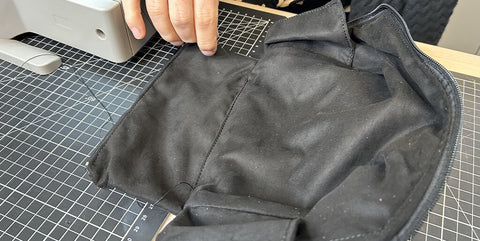 |
10. Attach the bellows
Sandwich the two corners of the small interior pocket into the gussets. Drill a hole and install a T3 rivet on each side.
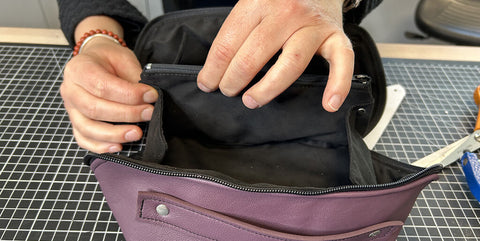 |
 |
 |
 |

Hand-stitch the 4 corners of the gussets onto the lining at the corners.
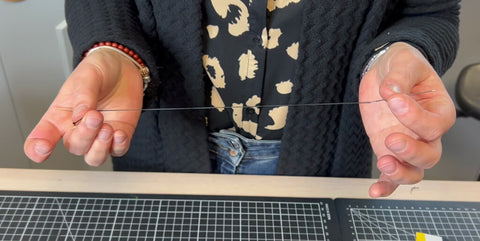 |
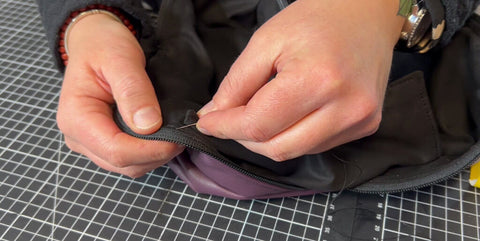 |
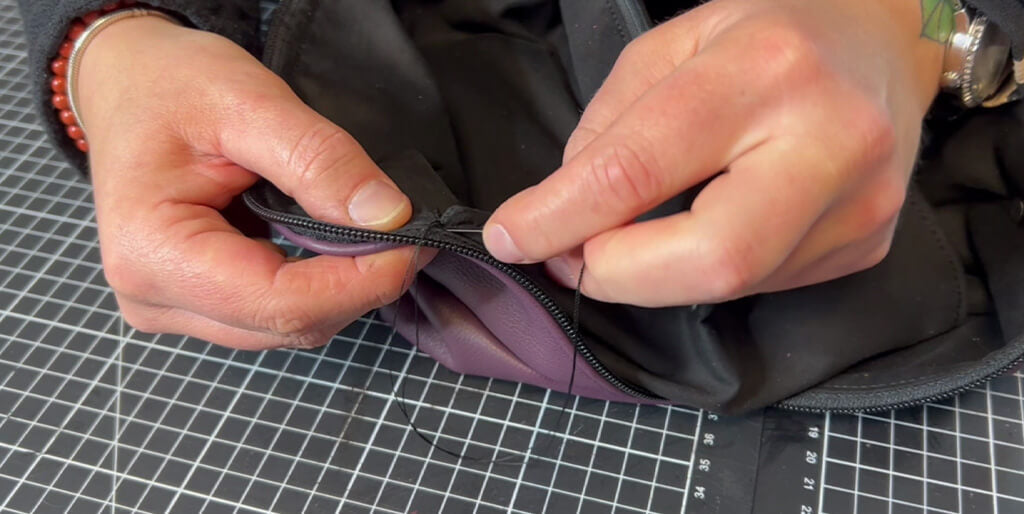
We chose to attach the handle at this time but you can attach it in step 3 so the rivets are hidden in the liner. We put T4 rivets.
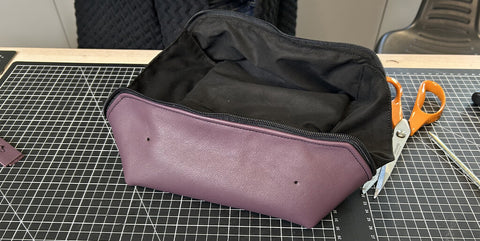 |
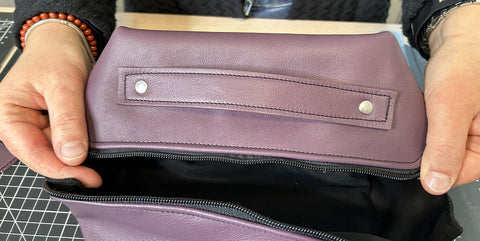 |
11. Option: Give shape to the kit
Topstitch at the top and bottom of the case (when folding, be careful to take the lining with it). This stitching will give more hold to the kit. 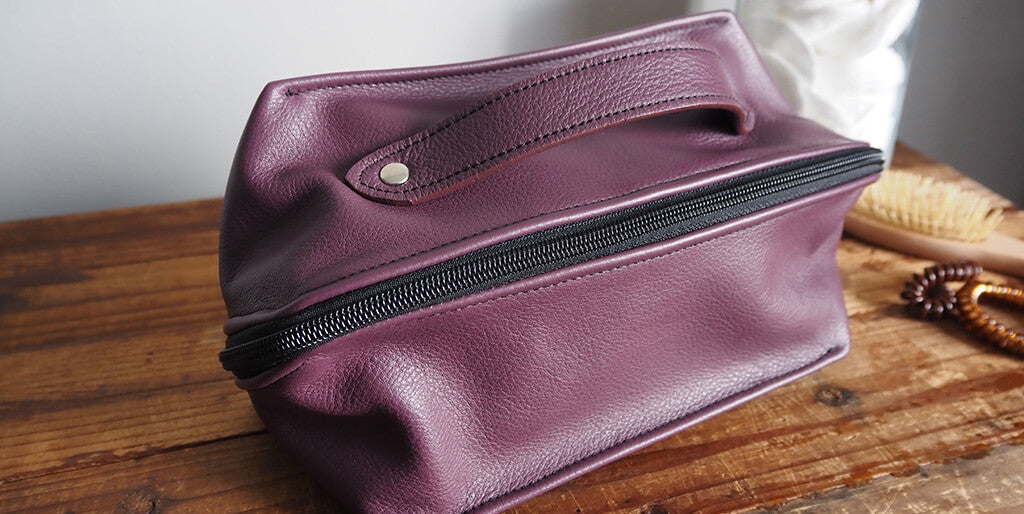
YOU HAVE FINISHED !
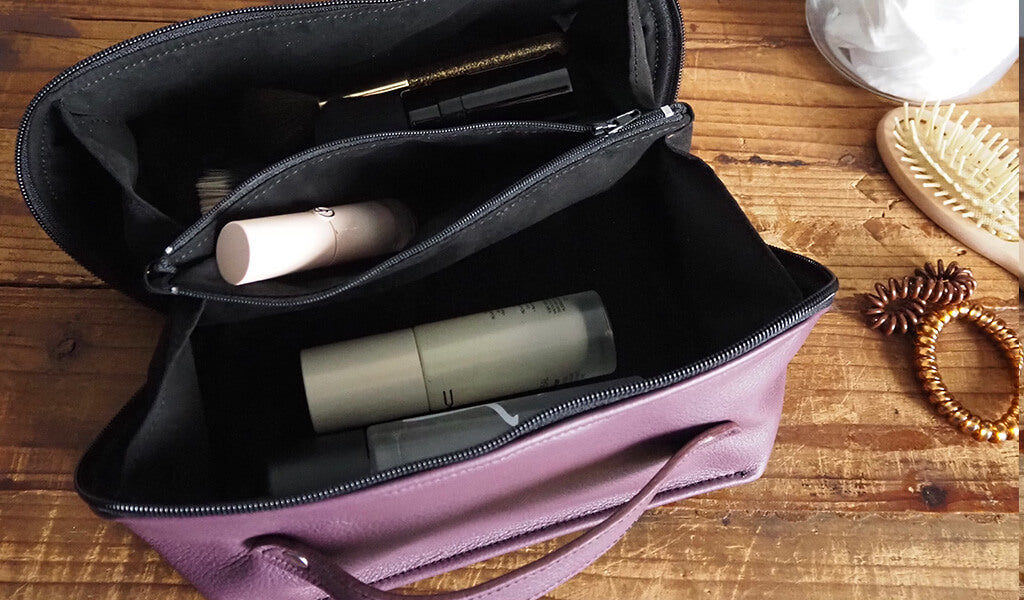
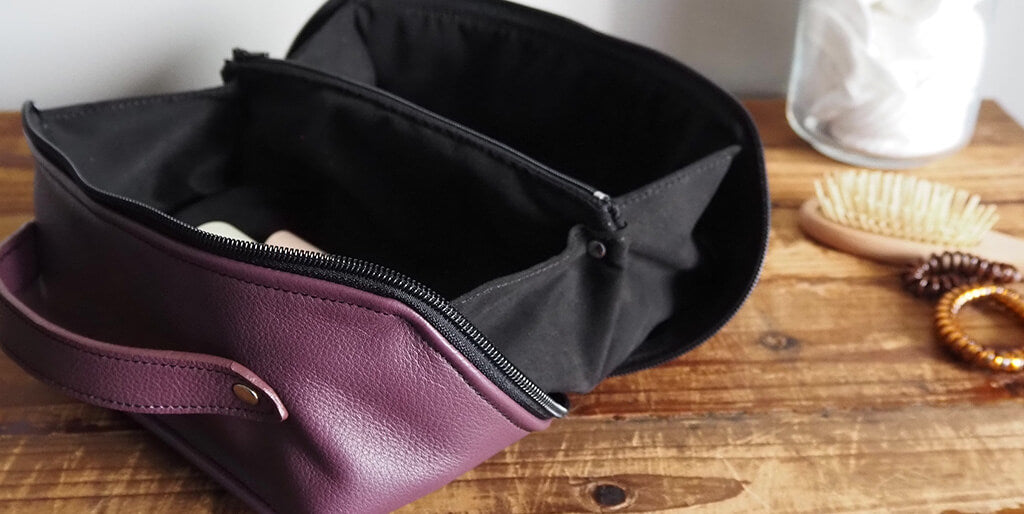

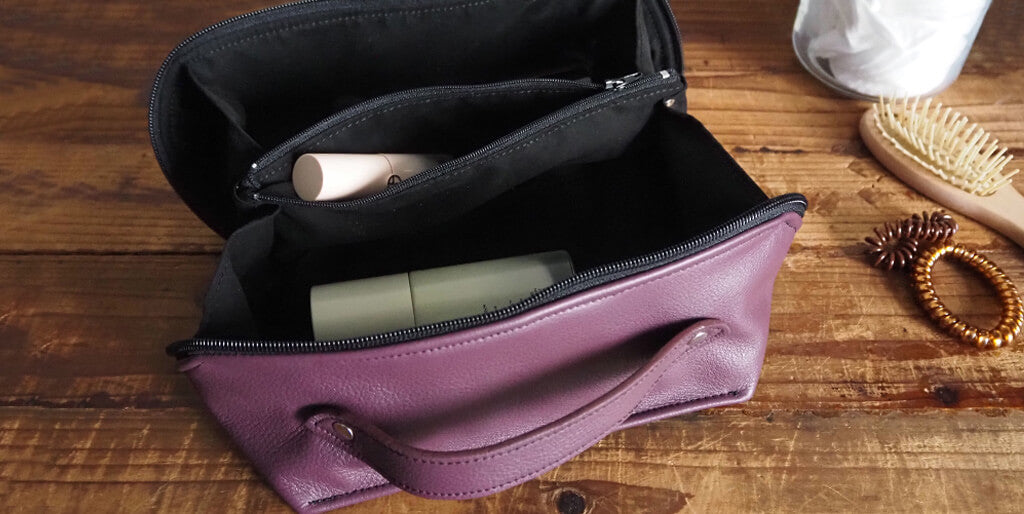
Also discover our men’s version:
SEE THE TUTORIAL >



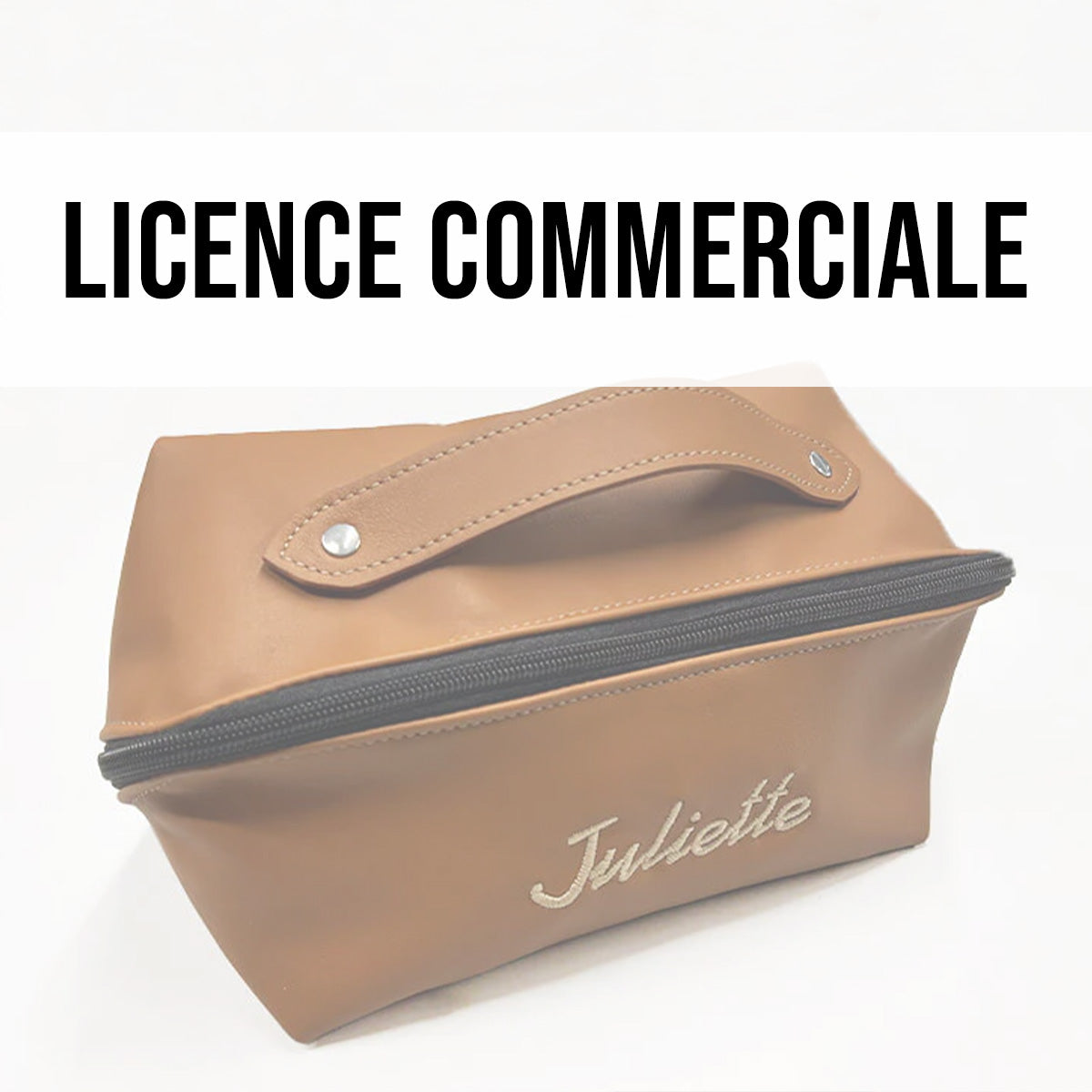
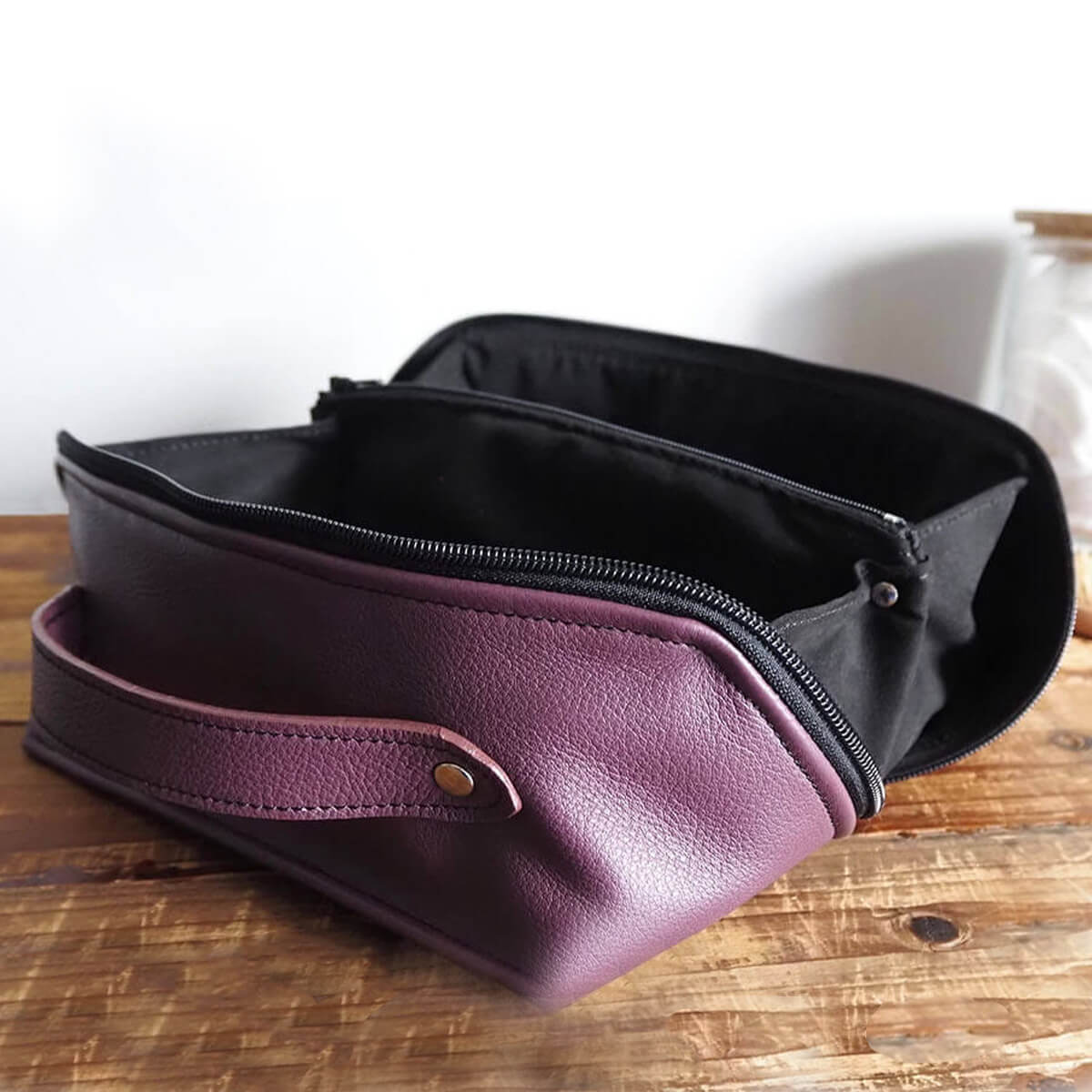
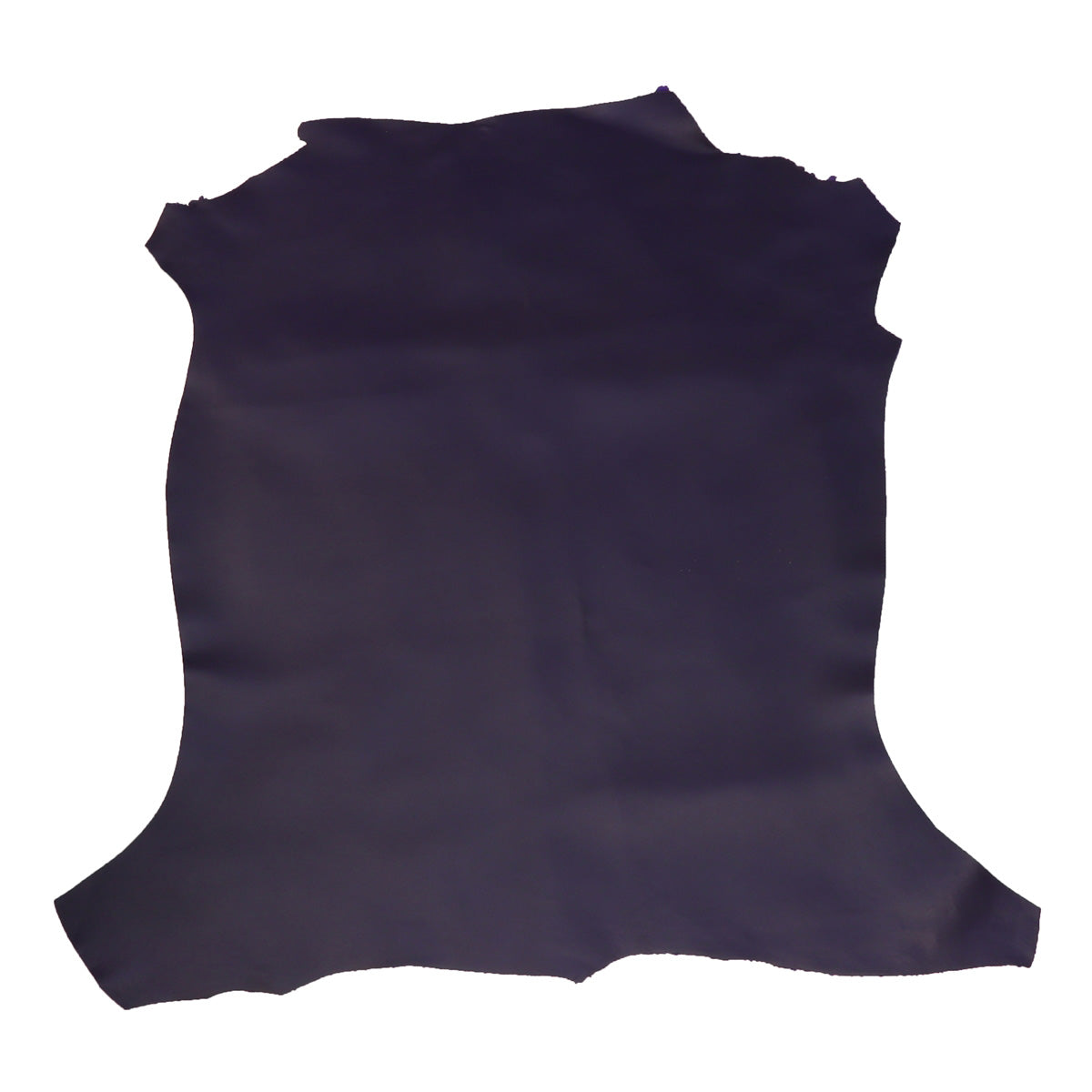





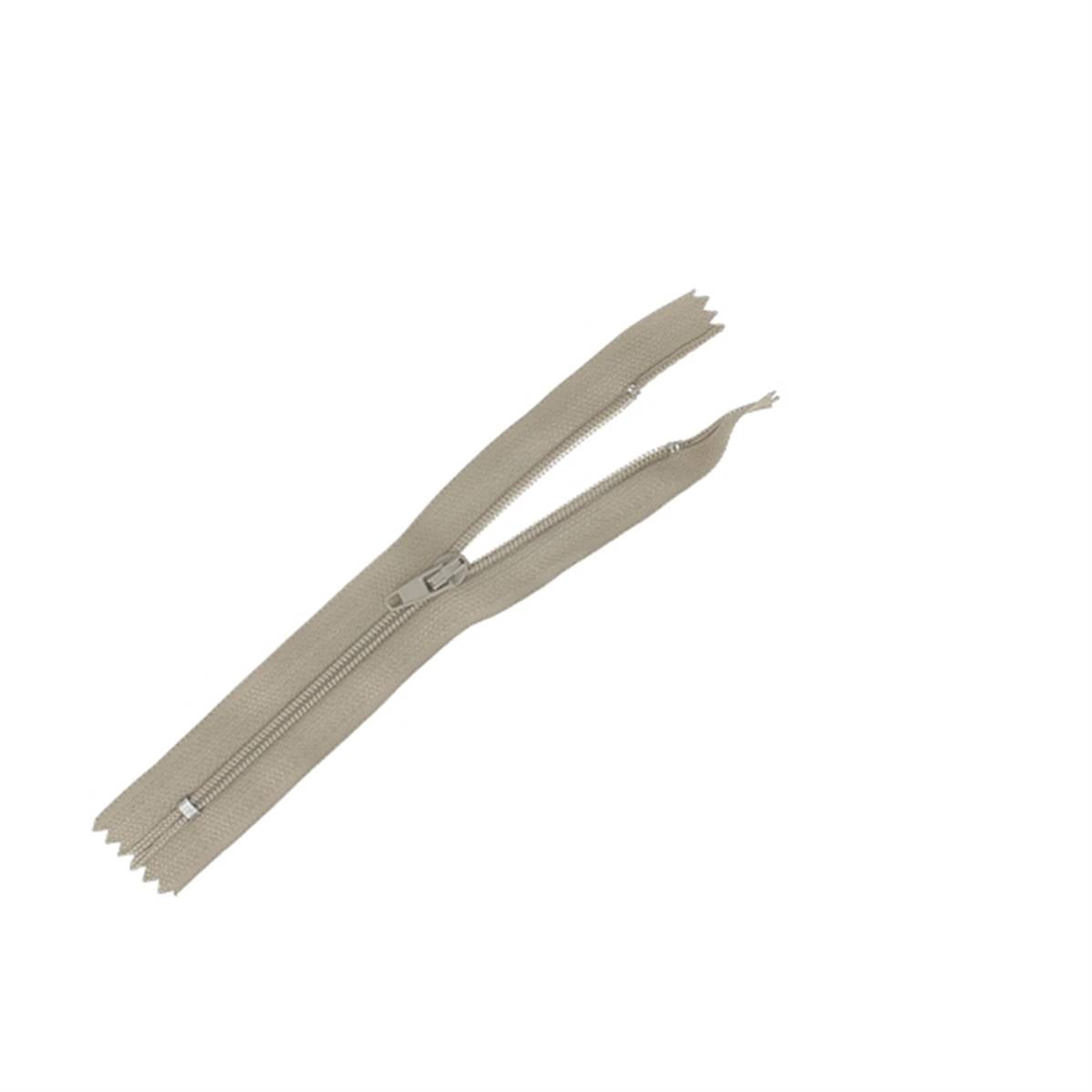
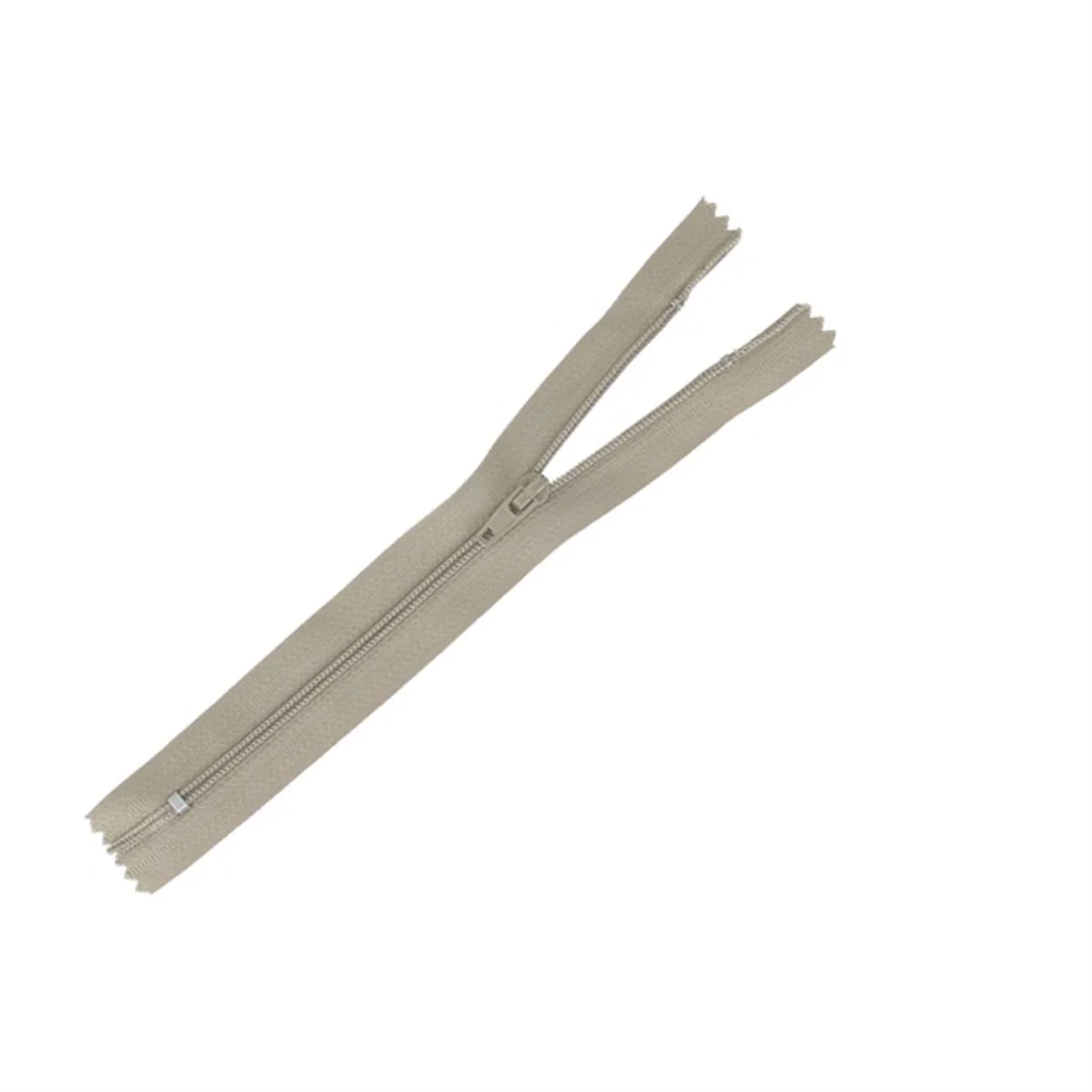


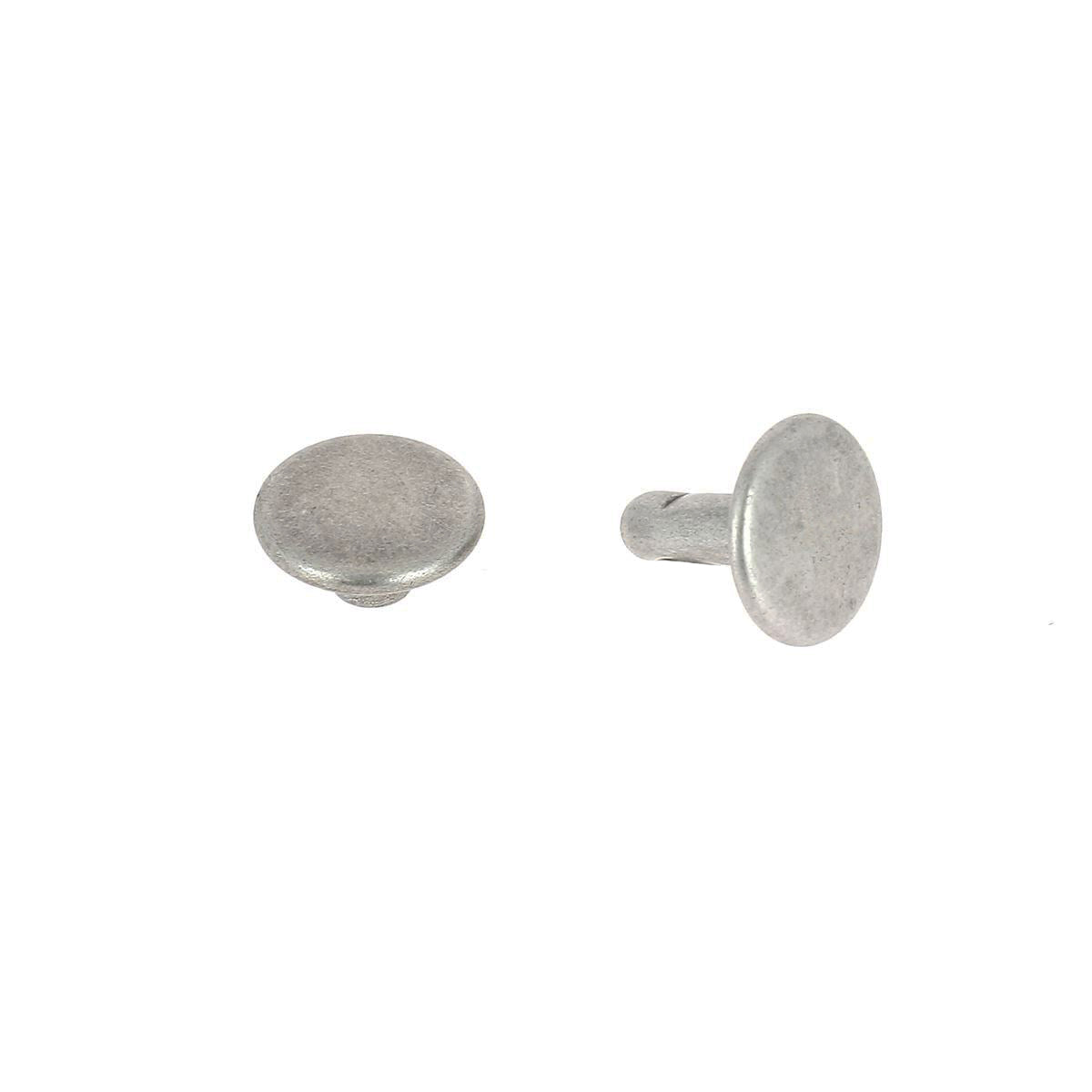

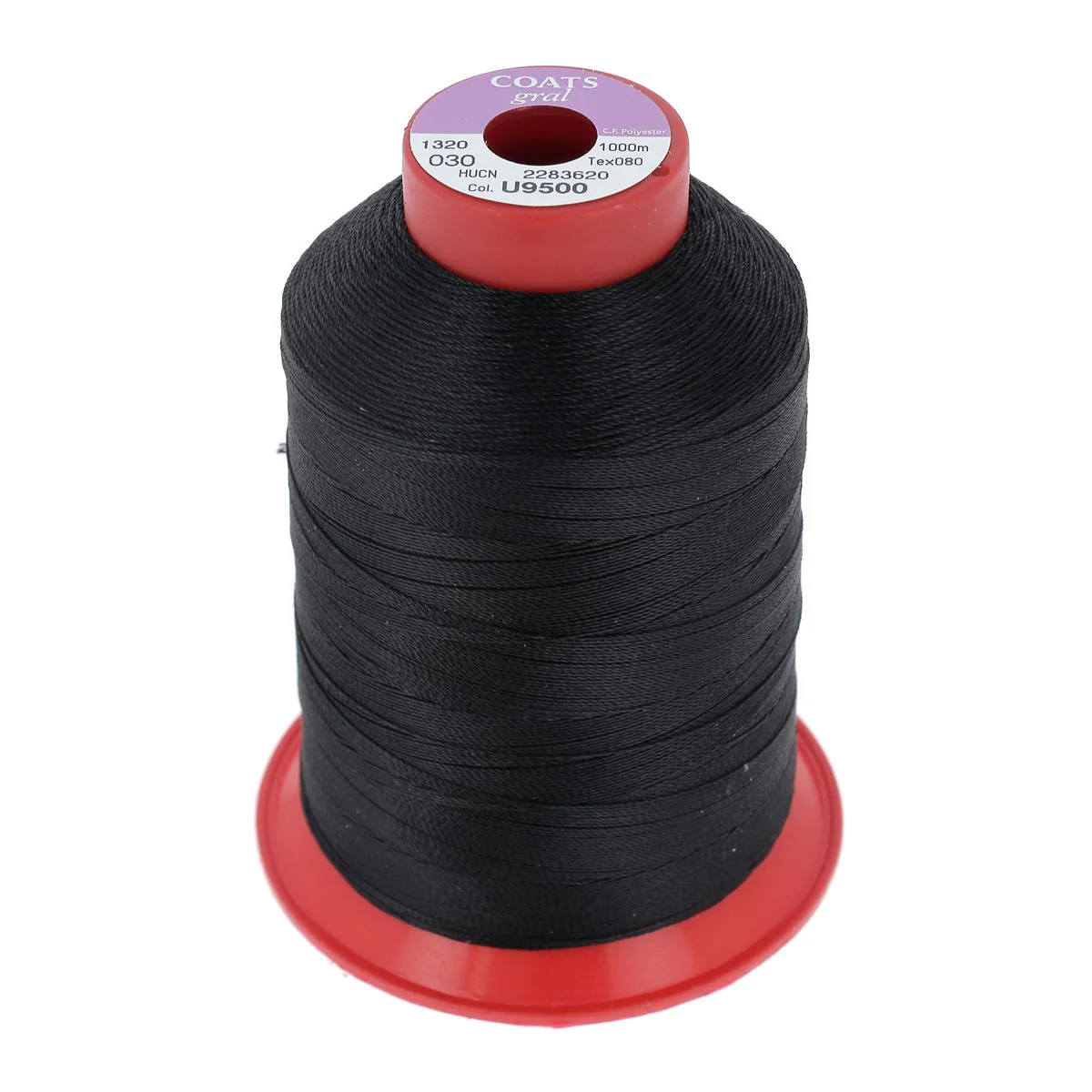







2 comments
Anonymous
Bonjour Aline,
Nous vous conseillons de vous rapprocher d’entreprises spécialisées notamment : BFM – Outils et machines pour cuir.
BFM concevra votre outil pour une gravure/marquage à froid ou à chaud du cuir.
Bonne journée,
Cordialement,
L’équipe Deco Cuir
Asson Aline
Bonjour je voudrais appliquer ma marque sur mes réalisations en cuir mais je sais pas et où trouver un pointeau je voudrais une orchidée d’un centimètre merci dans l’attente de votre réponse